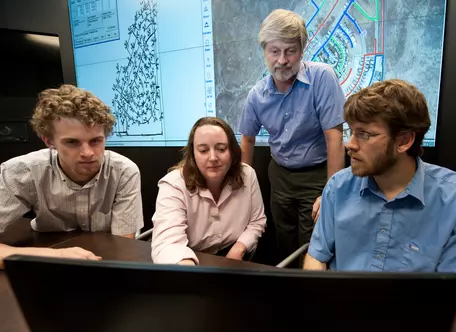Initial Publication Date: March 27, 2013
Workshop Synthesis
The final session of the workshop asked participants to summarize their closing thoughts about the workshop topics and experiences. The list below represents a synthesis of some of the common themes about integrating engineering, sustainability, and the geosciences.
See workshop outcomes that build from the ideas expressed in this synthesis.

×
- Integrating engineering, geoscience and social science instruction is powerful because it provides a context for learning, allows students to address complicated problems, and gives practice in working on collaborative teams typical of those they will encounter in the workforce and in academia. This integration is important to creating the workforce we need today and in the future balancing big picture and focused approaches.
- Engineers and geoscientists have distinctively different roles, approaches and perspectives. Successful engineering projects involving Earth materials or processes rely upon mutual appreciation of these differences and close collaboration between constituents.
- Success on interdisciplinary teams in all venues requires valuing the perspectives and skills that others bring to a problem. This valuing in necessary at the faculty level to support opportunities for interdisciplinary learning. Speaker series and interdisciplinary research teams can build appreciation of the importance and difficulty of interdisciplinary work. The uncomfortable truth is that none of us has a monopoly on useful ideas and perceptions. We approach full understanding through collaboration with people with different skills, background, life experiences, sensitivities, motivations. Diversity (broadly defined) is a key ingredient for developing full understanding and making good decisions. This requires we get out of our comfort zone.
- There are lots of opportunities for integrating geoscience and engineering as well as good examples on the InTeGrate site of how this is currently being done.
- Challenges include
- the different expectations, interests and goals that engineering and geoscience students bring to their learning
- the increasing pressure on instructional time and need to reduce time to degree
- Opportunities include:
- explicitly addressing the strengths and traditions that different groups bring to the table.
- being explicit about strategies for working together
- using sustainability as context for relevance of study in both disciplines
- linking together process and design in intro level courses, at specific points of intersection in the curriculum, and in project work -- this is needed in both disciplines
- using field experiences and real world problems as a focus for collaborative problem solving between geoscientists and engineers either within a course or using linked learning among courses
- using real world examples in the form of current news stories (Hurricane Sandy, droughts in the midwest, Tohoku earthquake and tsunami). Such cases provide rich resources to discuss the multidisciplinary issues that students will encounter in their work environments.
- Integration of geoscience, engineering and sustainability has strong promise for increasing diversity in both fields.
- Geoscience and engineering students have complementary quantitative skills and challenges: Geoscience students more often grasp the the origin and limits of numbers and their relationship to observation, while engineering students typically have strong facility with using numbers to solve problems. These differences pose a barrier to collaboration among our students.
- Work at the introductory and high school level will be important in developing a platform for collabortion by fostering interests and changing expectations among future geoscientists and engineers. The introductory physical geology course that frequently initiates the geoscience major provide important opportunities for bringing in applied geology, engineering, social science and sustainability.
- Sustainaiblity means very different things to individuals from different disciplines, cultures, and geographic regions. Starting from this point allows us to bring in a variety of viewpoints and value structures. There is a perceived rift between geoscientists who work on extraction and those who who work on the environment. Collaboration on sustainability with engineers may provide a way forward to bridging this rift.
- Their are institutional barriers and opportunities to integrating geoscience, engineering, sustainability that need to be addressed and/or capitalized on. The ABET certification can be a barrier or an opportunitiy.
- There is value in advising students to take courses in the compelmentary discipline and to considering the design of these courses to this end.
- There is an opportunity to think beyond sustainability and consider how we can at the same time improve the built environment and Earth/human interactions.